WC vs. History: Source Code



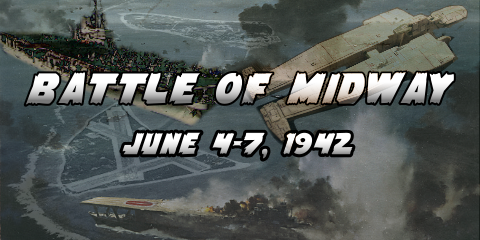
"In less than a month the Kilrathi will be above Earth demanding our surrender if we're lucky, though if past practices are any indication they'll flatten us with a full antimatter warhead bombardment and then come down to gloat over the wreckage and tear out the throats of the survivors with their claws when their next Sivar ceremony comes around." - Admiral Geoffrey Tolwyn, 2668
The Empire of Kilrah has broken the armistice agreement. A massive fleet of heavy carriers is poised to strike at the heart of the Confederation. Thrakhath's advance should be unstoppable. He has new ships, fresh pilots and believes he has achieved total surprise. What he does not know is that Admiral Sir Geoffrey Tolwyn, supposedly disgraced for sinking a Kilrathi carrier hours after the formal armistice, has actually been working with Confederation intelligence to learn the Empire's plans for months. Now Tolwyn is the newly minted commander of Third Fleet--and he is struggling to piece together an armada capable of stopping the Kilrathi.
"In the first six to twelve months of a war with the United States and Great Britain I will run wild and win victory upon victory. But then, if the war continues after that, I have no expectation of success." - Admiral Isoroku Yamamato, January 9, 1942
Admiral Yamamato could not have been more right. For the first six months of the Pacific War, Japan won an unbroken string of victories from Pearl Harbor, to Corregidor, to Wake, and the Dutch East Indies. It appeared that Japan was unstoppable. The Japanese themselves began to believe they were invincible, acquiring what would be penned later as "victory disease." The American carriers that had been missed at Pearl Harbor proved to be a thorn in Yamamato's side for the first few months of the war. The American carriers had struck at Japan itself in April, and then blunted the Japanese invasion of Port Moresby at the beginning of May. Since Pearl Harbor, Yamamato had sought a means of destroying them. An attack on Midway was sure to pull the American carriers out of their Hawaiian lair. What the Japanese weren't counting on was American crypto-intelligence intercepting their invasion plans and Admiral Nimitz preparing an ambush.
Today marks the 69th anniversary of the start of the Battle of Midway (June 4-7, 1942). In honor of the great naval battle that both changed the course of World War II in the Pacific and inspired Wing Commander's stories of dramatic carrier warfare in space, we have several exciting 'Wing Commander in History' updates.
Wing Commander's first major parallel happens in the novel Fleet Action. Admiral Tolwyn, who had been overseeing efforts in the Landreich to prove the Kilrathi were preparing to violate the armistice, returns to Earth with a secret mission. The plan is to have Earth broadcast a false message about a factory accident on the moon. Because Tolwyn is traveling on a fast Sabre, there is no way Kilrathi counter-intelligence can intercept the initial request:
"When Geoff left he went back amongst other reasons, to have ConFleet send out a false message which stated that our primary matter-antimatter assembly plant on the moon had been destroyed due to an accidental detonation. As a result no new weapons would be delivered for several months. The message of course was a complete fabrication. An hour ago we picked up this message from Kilrah to their Hari base and cracked part of it."Later, Admiral Banbridge asks Tolwyn to explain the message--and he immediately recognizes that it is a trick borrowed from World War II:Jason leaned over to look at the screen. Most of the message was untranslated but one line highlighted in red leaped out at him... "Remove target 2778A on moon of nak'tara from primary strike list Accident has destroyed target, ..." there were several lines untranslated..." shortage in antimatter weapons produced from 2778A expected, will update."
Jason looked back up at Vance.
"They took the bait. We broadcast the false message on a code we knew they had already cracked. Their listening post, most likely right in their embassy office picked it up and passed it back to Kilrah. Nak'tara means Earth. It means that whatever it is they're preparing out there in Hari is being aimed for an attack straight at Earth. Damn it, the bastards are getting ready to strike."
"First of all, what the hell was this signal you had me send?"As Geoff explained Banbridge's features lit up.
"Same trick we Americans once used against the Japanese at Midway with the fake report of a water distillery breaking down. The Japanese picked it up and reported to their fleet that Target X was short of water, and by that little trick we knew their next target was Midway. Vance always did know his history."
"Visitors were never welcome. To see anyone in the Navy's Combat Intelligence Unit at Pearl Harbor, it was first necessary to buzz a locked door at the top of some cellar steps. Eventually a man would appear and, if credentials were in order, the door would open, and the same procedure would be repeated. When this second door opened, the visitor was finally in." - Walter Lord, Incredible Victory
The "history" part of today's update occurs inside the Combat Intelligence Unit at Pearl Harbor. Captain Joseph Rochefort, who was part of the team that cracked the Imperial Japanese Navy's top "JN-25" code in fall of 1940, set up the station there in May 1941. HYPO would be pivotal in the early battles of 1942, but will be most famous for its role the Battle of Midway in June 1942.

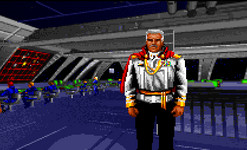
Captain Rochefort has multiple parallels in the Wing Commander universe, including Ches Penney who breaks the Kilrathi code at McAuliffe and spymaster Vance Richards who plans the 'antimatter shortage' trap.
American cryptologists had worked hard to "crack" JN-25. Cracking the code did not mean that they could read every message in its entirety; quite the contrary, code-breaking provided little more than 15% of any message. The useful intelligence was derived from analysis of this data along with the stockpile of previous decrypts kept within the CIU for review. One of the fascinating aspects of radio intelligence is that the way in which a person transmits messages, a called a "fist," is a unique signature like a person's voice. Those in Station HYPO became familiar with each Japanese operator's "fist" and used it in their analysis of incoming traffic. Code breaking requires a unique type of person to take all the disconnected hints and paint them into a meaningful picture.
The Japanese offensive that led to the Battle of Midway might not have happened if it was not for a submariner working on the staff of Commander-in-Chief US Fleet and Chief of Naval Operations Admiral Ernest King. King's Assistant Chief of Anti-submarine warfare Captain Francis Low was the officer who proposed in January 1942 that an Army twin-engine bomber could take off from an aircraft carrier after seeing Army bombers at a nearby airfield where the outline of a carrier was painted on the runway for naval training.
On the other side of the Pacific, Commander-in-Chief of the Combined Fleet, Admiral Isoroku Yamamato had been planning since Pearl Harbor for an operation to destroy the American carriers his strike force had missed. His plan was to invade Midway Atoll, 1,500 miles from Pearl Harbor, in order to provoke a sortie by the US Fleet.
In one of the most convoluted military plans ever devised, Admiral Yamamato and the Imperial Navy planned to simultaneously take Midway and, in a separate and independent operation, two islands in the Aleutian chain. The operations would use almost every ship in the Combined Fleet. His plan was met with considerable resistance by the High Command--until US Army B-25 "Mitchell" bombers arrived over Tokyo and other Japanese cities on April 18, 1942. After the Doolittle Raid, resistance disappeared and Yamamato was given a free hand to plan the assault.
As the Japanese prepared for the attack on Midway, Station HYPO continued its work of monitoring radio traffic. Nothing was conclusive, but something called "AF" kept appearing as either a destination or as a location calling for certain equipment (Admiral Banbridge incorrectly refers to this as "Target X" in Fleet Action). As the cryptologists desperately sought the meaning of "AF", one of the team remembered the call sign from messages the previous March. That month, the Japanese had launched a failed reconnaissance on Pearl Harbor using Kawanishi Type 2 flying boats (Codename "Emily") refueled by submarine tankers at French Frigate Shoals, a coral atoll that lies 560 miles northwest of Hawaii and 760 miles southeast of Midway. The failed raid had produced an intercept that spoke of passing near "AF." Reviewing the map, the only place besides Hawaii worth anything was Midway and Rochefort was the first to see the connection.
Captain Rochefort and Station HYPO needed to prove their worth to command before they would be taken seriously and valued as the asset they were. The idea of radio intelligence was unfamiliar and worrisome to some commanders. It took a visit from Admiral Chester Nimitz's War Plans Officer, Captain L.D. McCormick. McCormick's planned two hour visit became a three and a half hour eye opening journey after he became engrossed in HYPO's work. Once McCormick was convinced, Nimitz had complete faith in HYPO station. This trust allowed for one of the greatest naval battles to unfold decidedly for the United States Navy. Without this trust the ingenious plan to discover what "AF" was would not have ever happened.
After the Battle of the Coral Sea at the beginning of May, Rochefort went to see Lt. Commander Edwin Layton, the intelligence officer for Admiral Nimitz, with an idea. Rochefort wanted to have Midway broadcast in the clear that its salt water condenser had broken down. The Japanese would have no way to intercept the order to broadcast this as the message would be relayed to Midway through an underwater cable that connected Pearl Harbor with the outpost. Several days after the Midway broadcast Station HYPO intercepted a Japanese message stating that "AF" was low on fresh water and requesting that a water ship accompany the fleet. On May 14, Admiral Nimitz declared a state of "Fleet Opposed Invasion." He began recalling his meager forces to oppose the Japanese onslaught that consisted of most of the Imperial Navy (although only the 21 ships of Kido Butai would take part in the actual battle as the rest of the Imperial Navy was too far away to influence the outcome) versus the 28 ships of Task Forces 16 and 17.
Station HYPO continued to intercept, decrypt and analyze Japanese messages in the next two weeks leading up to the battle. When Task Forces 16 and 17 sailed at the end of May for their fight against the Imperial Navy, CINCPAC Operational Plan No. 29-42 contained a fairly detailed picture of the Japanese Order of Battle. They knew from which direction the Japanese invasion force would come and from which the carriers of Kido Butai would as well. They knew roughly how many ships: "For this purpose it is believed that the enemy will employ approximately the following: 2-4 fast battleships; 4-5 carriers, 8-9 heavy cruisers; 16-24 destroyers; 8-12 submarines; a landing force with seaplane tenders." ; and they knew roughly when. It's no wonder then that Vance Richards thought to use the same trick on the Kilrathi 726 years later.
Fleet Action also borrows Vance Richards' team of intelligence specialist directly from Station HYPO. The book goes into extreme detail about the Confederation's signal intelligence process, and it would all be equally at home in Pearl Harbor as it was at a deep space listening post. There is too much material to quote in its entirety here (see Chapter 6), but here is an excellent summary of the special breed of men required for the job:
"The analyst's job is the toughest. It takes someone with a sixth sense to decipher what appear to be unrelated facts but actually are part of a pattern."We do the same thing for the media channels, the public communication lines, and of course the military and government lines," and he pointed to the flashing red and yellow lights back on the holo display of Kilrah.
"Those are the tough buggers, a lot of it is burst signalled and highly encoded."
"Damn, there's hundreds of them," Jason said. "Something must be up." Vance laughed softly.
"Over ninety percent are dummy channels, broadcasting complete gibberish, total nonsense words that actually tie up most of our decoding equipment since we're not sure if its garbage or the real thing. Sometimes you might have a burst signal with a million words in it, all encoded, and the real message is twenty words in the middle, each word separated from the next by say six thousand four hundred words.
"Why that number?"
"Remember they have eight fingers and we have ten, so their numerical system is base eight. We tend to look a bit more intensely at base eight numerical lines as a result. What gets frustrating is that they are using at least a dozen different codes at any given time, with the highest level material going on what we call Fleet Code A, which tends to change every twenty-four to forty days. The real messages are hidden in a lot of garbage and we have to wade through each message and might spend weeks tracking down promising stuff only to discover it's a decoy."
"Some of their people even have a sense of humor about it. One message, when finally translated, was a simple 'Hey, stupid, we fooled you,' and another was a long excerpt from what I guess was a Kilrathi dirty book. Decoding and translating each of those things took up time and equipment. We can't ignore a single message because we never know if we might hit paydirt or not. So we wade through all of this, figure out the real signals from the fake, then spend a hell of a lot of time cracking the code, and just when we think we've got it, they go and change the code and we're back to square one. Then to top it off they might have a station that's quiet for weeks or months, and it pops off a lone burst signal then shuts down. Trying to even figure out where it came from out of a billion cubic light years of space was nuts until the D4 model, which could do a Doppler analysis and at least do a probable trace."
"I'd go mad," Tolwyn said.
"Some of us do," Vance replied. "It takes a special kind of person to do this. You fighter jockeys, your battle is one of skill and wits, but it gets played out in seconds. Some of our battles last years.
Tomorrow: the carrier battle begins!
Very special thanks to this update (and series)'s history author, Dundradal.



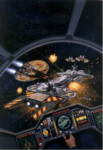
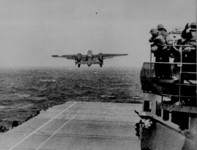


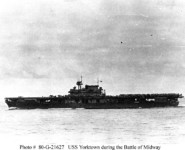
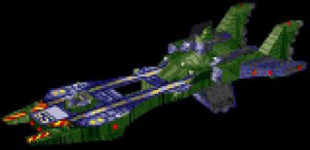
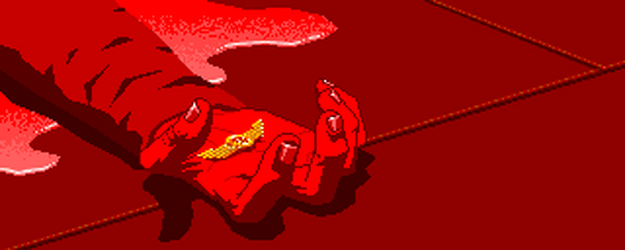

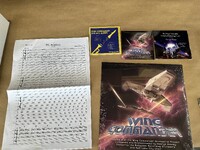

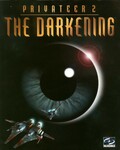
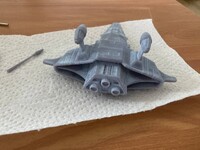
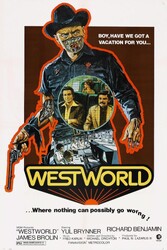
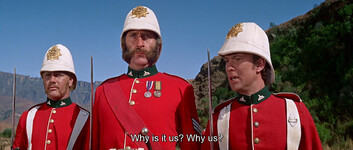

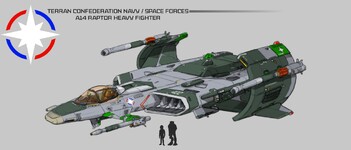
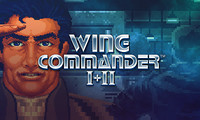



Follow or Contact Us